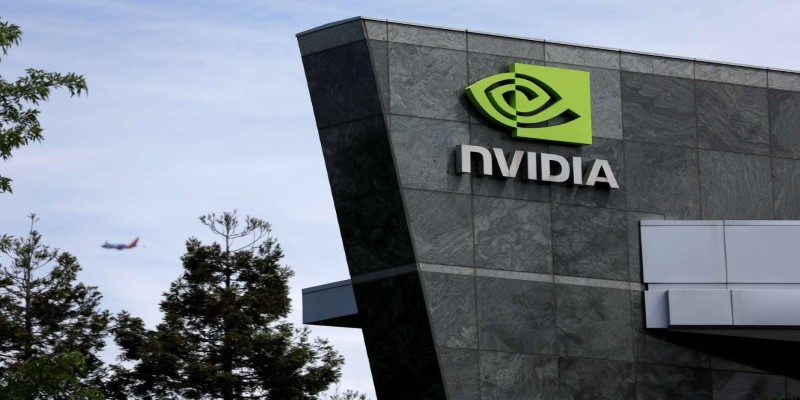Nvidia's Journey to the Top: How It Made Fortunes for Investors
Advertisement
A niche maker of graphics chips once confined to catering to hardcore gamers, Nvidia has evolved into a global leader in tech, fundamentally altering industries and making fortunes for investors in its wake. From pioneering gaming graphics to leading the charge in AI and data centers, Nvidia's meteoric rise has captured imaginations and wallets alike.

That is not just a company story; it's a transformation story, a risk-taking story, and huge returns for those who believed in this vision. Let's take a closer look at how Nvidia became a juggernaut and what that has meant for its investors.
The Foundation of Nvidia's Dominance
Nvidia Corporation began in 1993, focusing on a bold, innovative vision of redefining computer graphics. By the late 1990s, NVIDIA's graphics processing units revolutionized games. High resolutions and full immersion enticed gamers throughout the world; with unparalleled performance, Nvidia matched the expectations.
Early success built an important foundation, but the company did not rest on its laurels. Nvidia soon realized that GPUs had the potential to perform far more than simply render video games - they were accelerators for compute-heavy tasks such as AI and machine learning. Building from this foresight, Nvidia's meteoric trajectory throughout the 2010s defined it as a gaming company and a leader in technology innovation in areas ranging from autonomous vehicles to scientific exploration.
The extraordinary gains investors who bet on Nvidia earlier got to enjoy as a result of the expansion are hard to comprehend. Then, if the change took time, its impact was monumental.
Investors' Windfall: An Intriguing Story of Stunning Returns
For those who invested in Nvidia during its early days, the financial rewards have been nothing short of monumental. Nvidia went public in January 1999 at a price of $12 per share, which, adjusted for stock splits, amounts to roughly $0.33 per share. As of late 2023, Nvidia's stock price hovers around $500 per share, meaning early investors have seen their initial investments multiply more than 1,500 times.
To put this in perspective:
- A $1,000 investment in Nvidia's IPO in 1999 would be worth over $1.5 million today.
- For those who bought Nvidia shares in 2010, when the stock traded at approximately $10, the returns have still been staggering—over 4,900% in just over a decade.
The real explosion came after 2016, as Nvidia embraced AI, data centers, and deep learning. Between 2016 and 2023 alone, Nvidia’s stock skyrocketed over 3,500%, making it one of the best-performing stocks of the decade.
Additionally, Nvidia's rapid growth in 2023—driven by AI advancements—added over $700 billion to its market capitalization in less than a year, significantly enriching both institutional and retail investors.
The Catalysts Behind Nvidia’s Growth
Nvidia’s meteoric rise can be attributed to a combination of innovation, strategic pivots, and market trends. Its visionary leadership, led by co-founder and CEO Jensen Huang, ensured that the company always stayed ahead of the curve.
AI and Deep Learning: Powering the Revolution

Nvidia’s GPUs have become indispensable for artificial intelligence, enabling breakthroughs in areas like natural language processing, computer vision, and robotics. The company’s CUDA (Compute Unified Device Architecture) platform transformed GPU computing by making it accessible to developers and researchers worldwide. CUDA didn’t just optimize existing AI systems; it laid the foundation for advancements in fields like autonomous vehicles, healthcare diagnostics, and AI-powered customer services.
Data Center Expansion: The Backbone of Cloud Computing
Nvidia’s shift from gaming to data centers marked one of its most successful pivots. Recognizing the growing demand for high-performance computing in enterprises and cloud services, Nvidia expanded its GPU offerings to target the lucrative data center market. The acquisition of Mellanox Technologies in 2020 for $6.9 billion was a game-changer. Mellanox’s expertise in high-speed networking complemented Nvidia’s GPU dominance, creating a seamless solution for data-heavy industries. Nvidia’s A100 Tensor Core GPUs, for instance, became essential in accelerating workloads for cloud services, enterprise AI, and supercomputing.
Automotive and Robotics: Driving Innovation

Nvidia’s foray into autonomous vehicles and robotics highlights its ability to innovate beyond traditional markets. The Nvidia DRIVE platform, a comprehensive suite of hardware and software solutions for self-driving cars, has become a favorite among automakers and startups developing autonomous technologies. Companies like Mercedes-Benz, Tesla, and Volvo rely on Nvidia’s DRIVE solutions for real-time decision-making in autonomous vehicles. Nvidia’s simulation tool, DRIVE Sim, allows manufacturers to test AI-powered driving systems in virtual environments, reducing costs and risks.
The Lessons for Future Investors
Nvidia’s rise isn’t just a case study in corporate growth—it’s a masterclass in long-term investing. The company’s trajectory highlights the importance of identifying transformative technologies early and staying the course despite market fluctuations. Investors who stuck with Nvidia during periods of volatility, like the 2008 financial crisis, were rewarded for their patience.
Moreover, Nvidia’s meteoric rise underscores the power of diversification. The company continually diversified its revenue streams, ensuring it wasn’t overly reliant on any single market. From gaming to AI and data centers, Nvidia embraced change and thrived.
For aspiring investors, the key takeaway is to identify companies with visionary leadership, a culture of innovation, and the ability to pivot toward emerging trends. Nvidia exemplifies all three.
Conclusion
Nvidia’s meteoric rise isn’t just about stock charts and financial gains—it’s a testament to the transformative power of innovation and the rewards of long-term vision. The company’s journey from a gaming-centric startup to a global technology leader has redefined industries, created wealth for countless investors, and set new standards for what’s possible in tech. For those who believed in Nvidia’s potential early on, the rewards have been extraordinary. As we look to the future, Nvidia’s story serves as both inspiration and a reminder of the incredible opportunities that come with embracing innovation.
On this page
The Foundation of Nvidia's Dominance Investors' Windfall: An Intriguing Story of Stunning Returns The Catalysts Behind Nvidia’s Growth AI and Deep Learning: Powering the Revolution Data Center Expansion: The Backbone of Cloud Computing Automotive and Robotics: Driving Innovation The Lessons for Future Investors ConclusionAdvertisement












